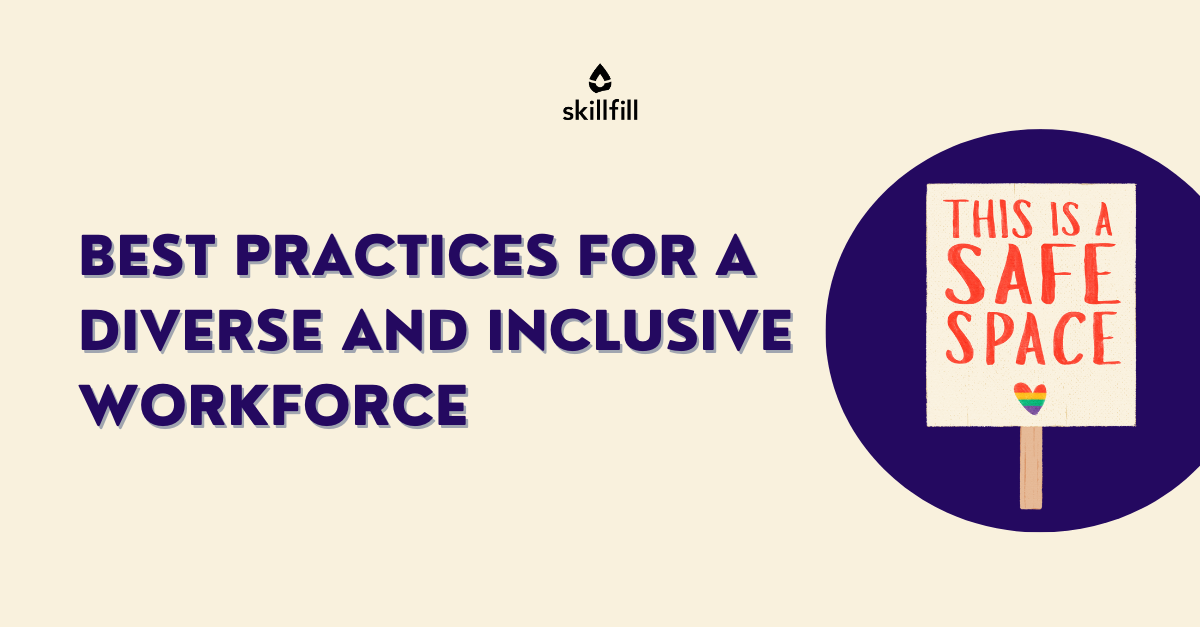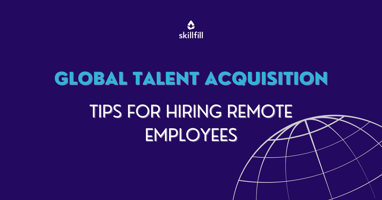Up until now, as humans and organizations, we grew and developed in an amazing speed, and we were...
Best Strategies and Practices for a Diverse and Inclusive Workforce
At skillfill.ai, we embrace the influence of diversity and inclusion (D&I) as catalysts for success, instigators of innovation, and creators of a flourishing work atmosphere. This article focuses into the most effective strategies and best practices that can propel businesses, like yours, to excel in today's multifaceted marketplace. By implementing these strategies, you have the opportunity to establish an all-embracing culture that entices exceptional talent, heightens employee engagement, and ultimately surpasses competitors.
The Business Rationale for Diversity and Inclusion
Diversity and inclusion transcend mere catchphrases; they constitute the fundamental drivers of business triumph. Research consistently demonstrates that diverse teams outshine homogeneous ones, leading to elevated levels of imagination, innovation, and problem-solving. Furthermore, organizations that prioritize D&I reap the rewards of enhanced employee engagement, diminished turnover rates, and an elevated reputation within the marketplace.

Cultivating an All-Encompassing Culture
Leadership Commitment
To cultivate a genuinely all-encompassing culture, it is imperative for leaders to exhibit total dedication to D&I. Leadership must not only champion diversity but also hold themselves accountable for integrating it throughout all levels of the organization. By prioritizing D&I as a strategic imperative, leaders establish the precedent for inclusivity, inspiring others to follow suit.
Inclusive Recruitment Practices
Fostering a diverse workforce commences with the implementation of inclusive recruitment practices. Companies should establish objective criteria to evaluate candidates, ensuring that job descriptions and requirements are devoid of biased language. skillfill.ai' pre-employment tests allow teams to assess the tech skills of the candidates objectively, without considering aspects like gender or race.
Moreover, organizations can proactively seek out diverse talent by forging partnerships with community organizations, participating in career fairs, and leveraging digital platforms to connect with underrepresented groups.
Employee Resource Groups (ERGs)
Employee Resource Groups, known as ERGs, play a pivotal role in fostering inclusivity within organizations. These groups provide a platform for employees to connect, share experiences, and provide support to one another. ERGs can focus on various dimensions of diversity, such as race, gender, ethnicity, or sexual orientation, thereby creating spaces where employees can find a sense of belonging and contribute to a more all-embracing workplace.
Training and Education
Investing in diversity and inclusion training is vital to promote awareness and understanding across the organization. Through workshops, seminars, and online modules, employees can develop cultural competence, learn about unconscious bias, and acquire the necessary skills to collaborate effectively in diverse teams. Training should be an ongoing effort to ensure continuous learning and growth.
Strategies for Diverse and Inclusive Teams
Mentorship and Sponsorship Programs
Establishing mentorship and sponsorship programs can furnish valuable guidance and support to underrepresented employees. Mentors can offer career advice, share experiences, and help mentees navigate the intricacies of the organization. Sponsors, on the other hand, champion the advancement of their protégés, create opportunities, and assist in building influential networks. By implementing these programs, organizations empower diverse talent and nurture future leaders.
Flexible Work Arrangements
Recognizing and accommodating the diverse needs of employees is critical in cultivating an inclusive work environment. Offering flexible work arrangements, such as remote work options, adaptable hours, or job-sharing opportunities, can empower individuals with varying circumstances to thrive. This flexibility promotes work-life balance and enhances employee satisfaction, resulting in heightened productivity and retention.
Recognizing and Celebrating Differences
Organizations should actively promote a culture of appreciation for individual differences. By recognizing and celebrating diverse backgrounds, perspectives, and experiences, companies create an environment where employees feel valued and included. This can be achieved through events, celebrations, or initiatives that showcase various cultural traditions, observances, or heritage months.
Measuring and Tracking Progress
To ensure the effectiveness of D&I initiatives, it is imperative to measure and track progress. Organizations can establish key performance indicators (KPIs) pertaining to diversity and inclusion, regularly assessing their performance against these metrics. Employing a data-driven approach enables organizations to identify areas for improvement, celebrate successes, and hold themselves accountable for creating an inclusive workplace.
Conclusion
Diversity and inclusion lie at the core of any organization's success in today's interconnected and globalized world. By implementing the best practices and strategies outlined in this article, you have the opportunity to foster an all-encompassing culture that attracts and retains exceptional talent, drives innovation, and outperforms competitors. Embracing diversity and inclusion is not only the morally correct path but also a strategic imperative for long-term success in the ever-evolving business landscape. Implementing these comprehensive D&I strategies empowers your organization to cultivate a thriving and inclusive work environment, attracting top talent, boosting employee engagement, and positioning you as an industry leader, surpassing competitors.
ASSESS TECH TALENT BEYOND CVs
Start today your 14-day free-trial and identify the best tech talent to join your team.



